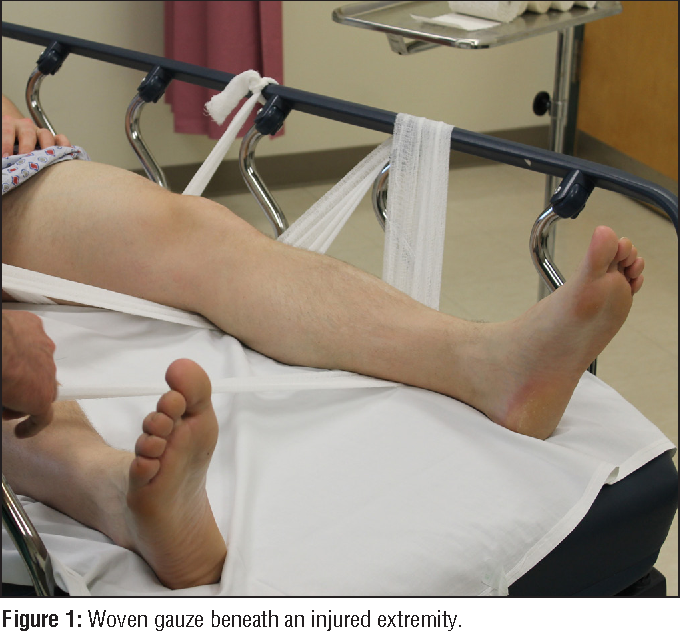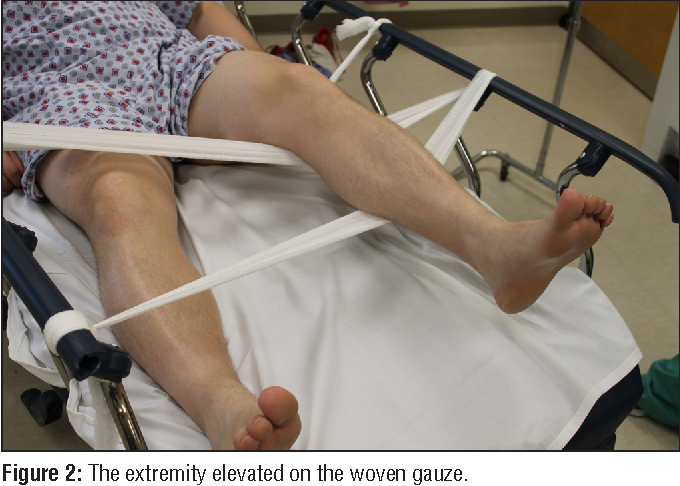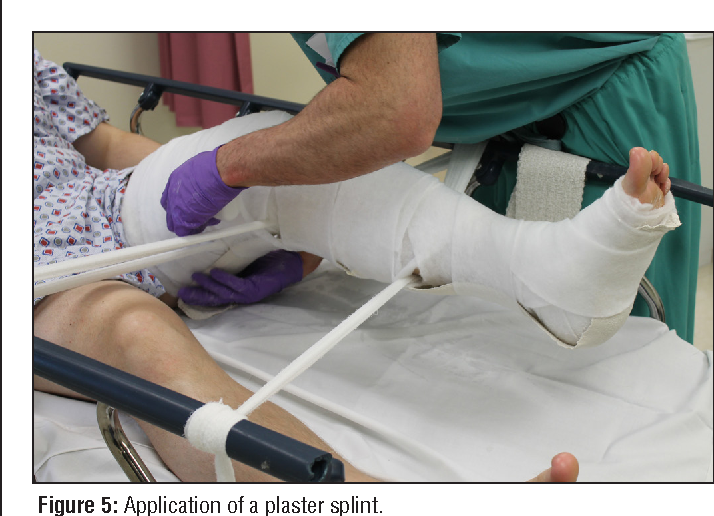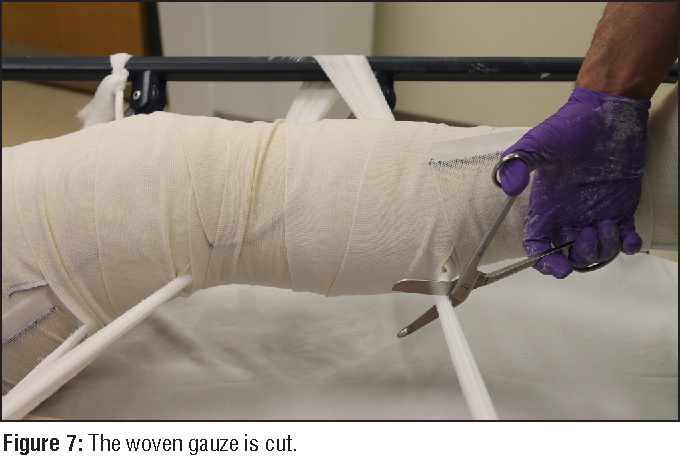Edited by Grace Xiong, Harry Lightsey, Brendan Striano - 7/1/2021
Indications/Contraindications
Indications:
Tibia fractures of any kind (shaft, plateau), distal femur fractures if patient not tolerating knee immobilizers, post-knee reductions
Materials/positioning
Materials:
- 4” plaster, 8 rolls
- 4” ACE wraps, 6 rolls
- 4” Webril, 10 rolls
- Tape
- 4 Kerlix rolls if doing hammock (see below)
Positioning:
Supine in stretcher, with either an assistant holding the knee OR have the patient grip their thigh.
Alternatively, may splint the patient with use of a "hammock" sling which allows splinting alone. Technique adapted from Watkins C, Todd D, Jamieson S, Mansour A. Leg hammock for closed reduction of tibial shaft fractures. Orthopedics. 2015 Feb;38(2):113-6. doi: 10.3928/01477447-20150204-03. PMID: 25665109.


Technique
Measure out splint:
On the uninjured side, measure the length of the splint using plaster.
Two components:
Posterior slab: Measure from upper thigh to just past the toes.
U slab, better done as two "J" slabs: Measure around the lower leg to the upper thigh
Splint preparation:
10-12 layers of plaster and 5 layers of webril
Splint application
Place posterior slab first and tack down with webril. Leave a small "window" anteriorly if skin checks and compartment checks are needed.
Hammock technique illustration:

Wrap with ace wraps:

Molding
Usually no molding as these are often operative injuries.
Remove hammock
Cut down Kerlix hammock and gently pull out from under splint.

Pearls & Pitfalls
Potential complications: None usually
Tips for efficiency: Have all supplies ready at the start.
References
Hammock technique adapted from: Watkins C, Todd D, Jamieson S, Mansour A. Leg hammock for closed reduction of tibial shaft fractures. Orthopedics. 2015 Feb;38(2):113-6. doi: 10.3928/01477447-20150204-03. PMID: 25665109.